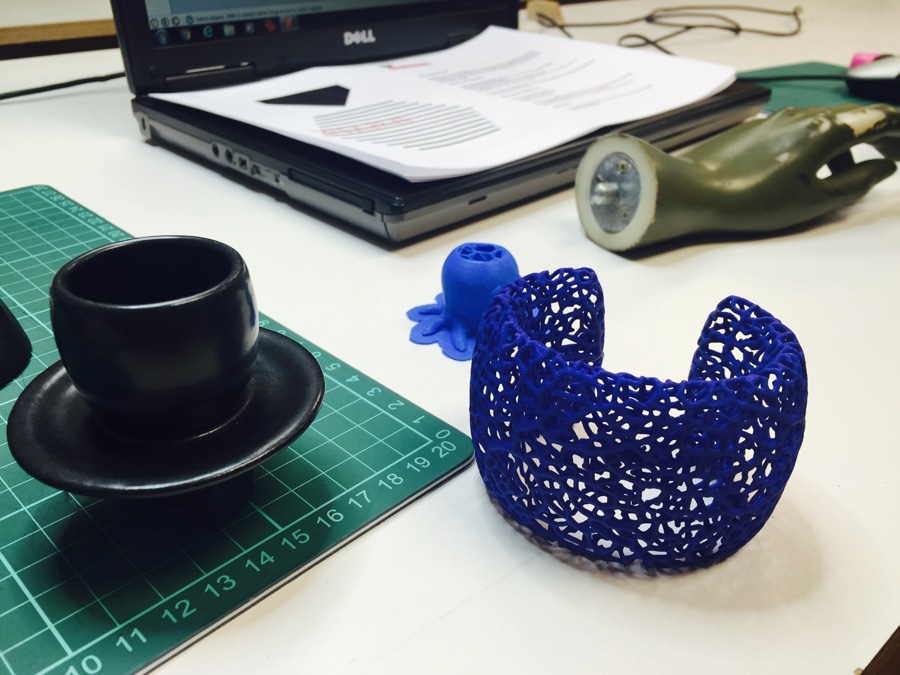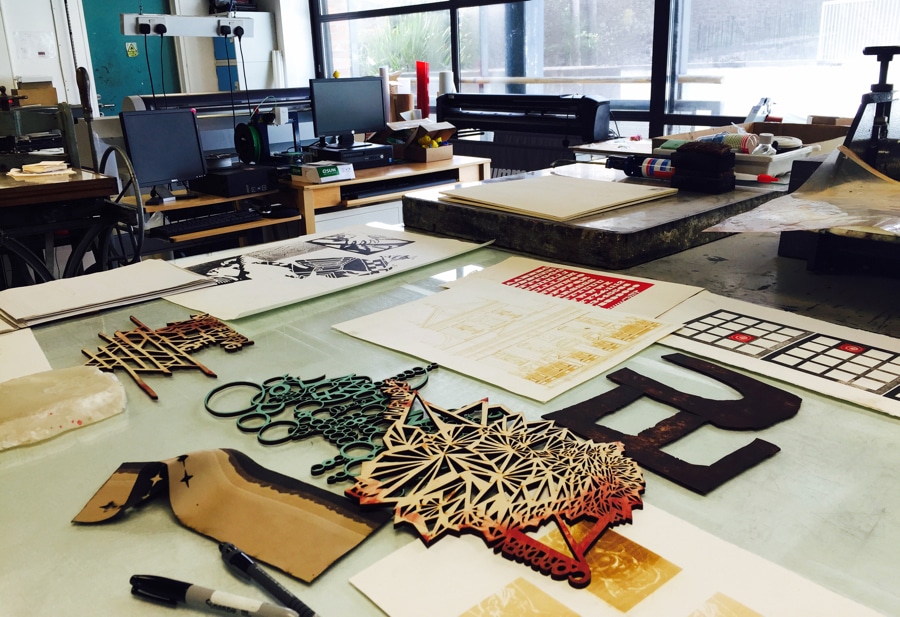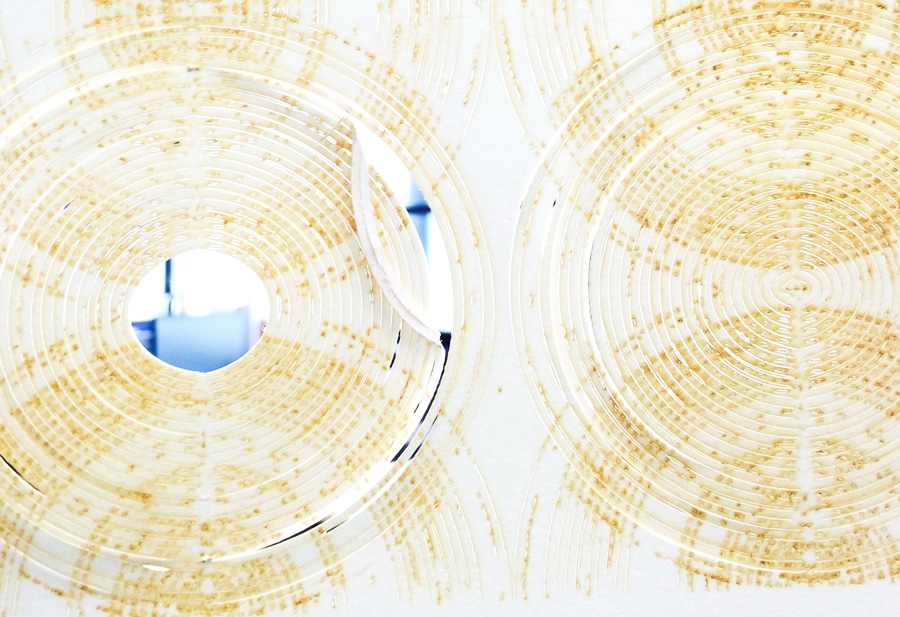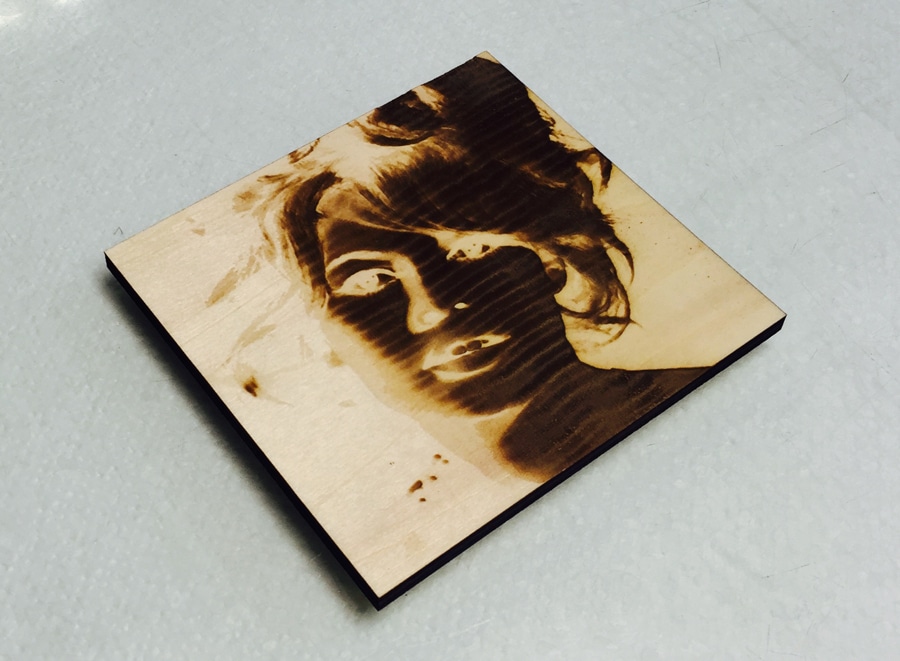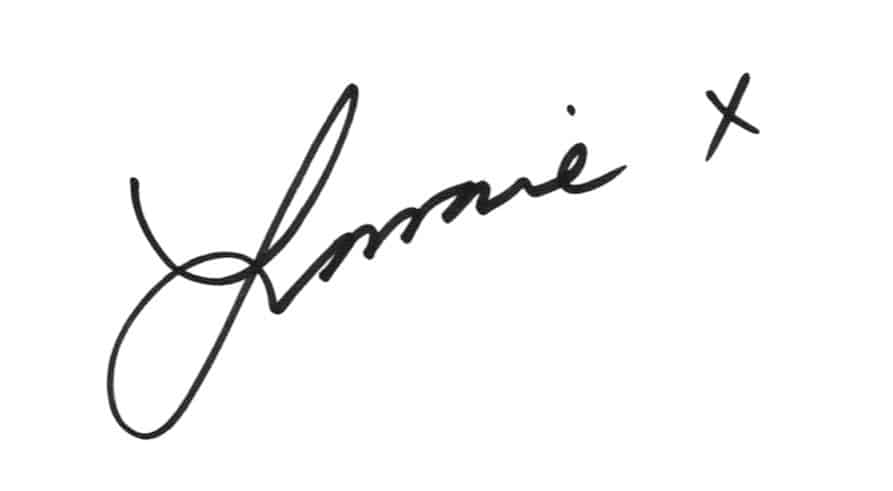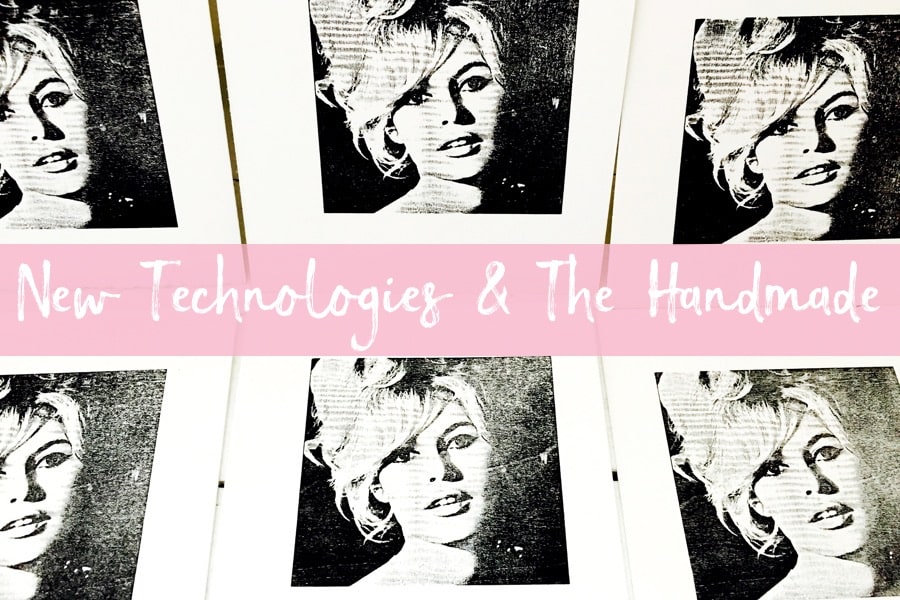
New Technologies & The Handmade
Home / Blog / Creative Ideas / New Technologies & The Handmade
With London Craft Week just behind us and craft fairs coming into full bloom, ‘handcrafted’ is a bit of a hot topic at the moment as are ‘ new technologies’ – a slightly odd couple to be sharing the creative industry headlines.
While I was musing over this, I saw an eye-catching image by Tanya Zaben of @interior.monologue (an instagram feed I love with great images and links to fine craft and artisan products). It showed two beautiful dresses assembled in an elegant origami of pleats and folds taken from ’Manus x Machina’, a new exhibition at the New York Met Museum exploring fashion designers’ use of technology through the decades. Its features amongst others, the work of Dutch designer Iris Van Herpen a pioneer in using 3D printing and other technologies to produce her designs. In a related blog post, Tanya’s discusses her initial scepticism for using these methods in her own handmade design products which a struck cord with my own.
Speaking from an artist’s viewpoint, I’ve always felt a little queasy at the thought of using these new technologies in my own work. I think it’s something to do with control and not enjoying feeling excluded. I prefer to get a bit messy and stay in physical contact with the piece, leaving the marks and imperfections in the surface that bring something familiar and human to the work. Handcrafted = from the heart, made with time and toil. For me introducing new technologies poses the threat of disrupting this delicate and emotional connection both for myself as the artist and for the viewer.
So it came as much of a surprise to me as it might to you that despite my Luddite leanings, I recently found myself signing up to a 3D printing workshop and a laser cutting workshop in the same week! Before you sneer at me for being inconsistent, I didn’t say I wasn’t interested – I’ve always had a healthy curiosity for ‘looking over the garden fence’ so to speak. Since branching out into the realms of interiors, the possibility of making multiple products developed from one artwork is exciting for a sculptor – especially the idea of cutting out or at least reducing the manufacturing stages!
For the 3D printing workshop, I made my way to MAKlab in Glasgow which is an innovative social enterprise and a fantastic resource for learning new technology design skills. The workshops are short and focussed and best of all affordable. They’re open to people of all abilities, backgrounds and skills from ‘have-a-goers’ to professional designers and makers who need to develop bespoke products and prototypes.
We were shown a range of 3D printed objects from small ceramic vessels and jewellery to moving parts for engineering and architectural models. I found myself learning beside a ‘mature gentleman’ and a ten year old boy – learning is such a levelling experience. We fledglings had a lot of fun that evening as we mucked about with a 3D modelling program. I made a tiny latticework beehive by ‘building’ it on the computer and then creating a file that could be read by the 3D printer. It’s an intriguing process albeit with certain limitations in terms of finish but I could see that it allows pretty impossible designs for jewellers and engineers even as it is now. It’s still relatively expensive to make anything larger than your hand but I can see how this will develop at a fast rate over the next few years until having one in our own home will be as normal as having an inkjet printer is today.
The second workshop later in the week was held at another fantastic resource – Dundee Contemporary Arts, a multi-purpose venue for contemporary art, design and film and they have a great little cafe/bar there too. We were shown samples laid out on the table one of which caught my eye. It was wooden shape made up of wonky circles of various sizes. Scott our tutor explained that it was an early test piece by Ilana Halperin, a New York-born artist living in Scotland whose work explores geology and time. She created these loopy forms several years ago in laser cut wood and then placed them in mineral pools in Iceland where the salts built up over time creating delicate crystallised sculptures. Seeing how this ‘new’ technology ( which of course has been around for a good few years now) could actually be an integral part of the making process that led to such atmospheric artworks has inspired me. We were also shown fabrics, glass, delicately cut paper and a whole host of other materials that got me swooning over the endless possibilities.
Scott then pointed to the opposite end of the room. Sat in the far corner of the studio, was a ‘Heath Robinson’ type contraption of heavy black steel, cog wheels, levers and a large weathered wooden turning handle. We’d be using this beautiful printing press from the 1800’s to create relief prints from our laser cut tiles.We took the black and white photos we’d been asked to bring (I’d chosen an image of the queen of boho herself – Brigitte Bardot) and created files on the computer for the laser cutter. The programming of the laser machine is a bit tricky but I reckon if you memorised the steps and experimented a bit, you could get the hang of it fairly quickly. There are adjustments to be made in terms of how deep you want to cut and it can even do ‘kiss cuts’ – how romantic! Twenty minutes later and Brigitte’s tousled locks and iconic face were appearing before my very eyes, etched into the surface of my small wooden tile.
I skipped over to the mighty Victorian press in the corner, rollered some black ink onto my wooden square and placed it on the press. I laid lovely rag paper on top and placed the blankets ( which protect the artwork from the rollers – it operates a bit like a pasta maker to put it crudely!) and it took all my strength to turn the big handle of the press but gradually Brigitte disappeared under the heavy steel rollers.These prints were the first I’ve ever done of this kind and I was delighted with the grainy film noir effects created by the old press combined with the laser cut lines from the wooden relief block.
Who knew that new technologies and handcrafted could combine so harmoniously. It opens up so many exciting avenues for makers – I’m converted and so is Brigitte!
